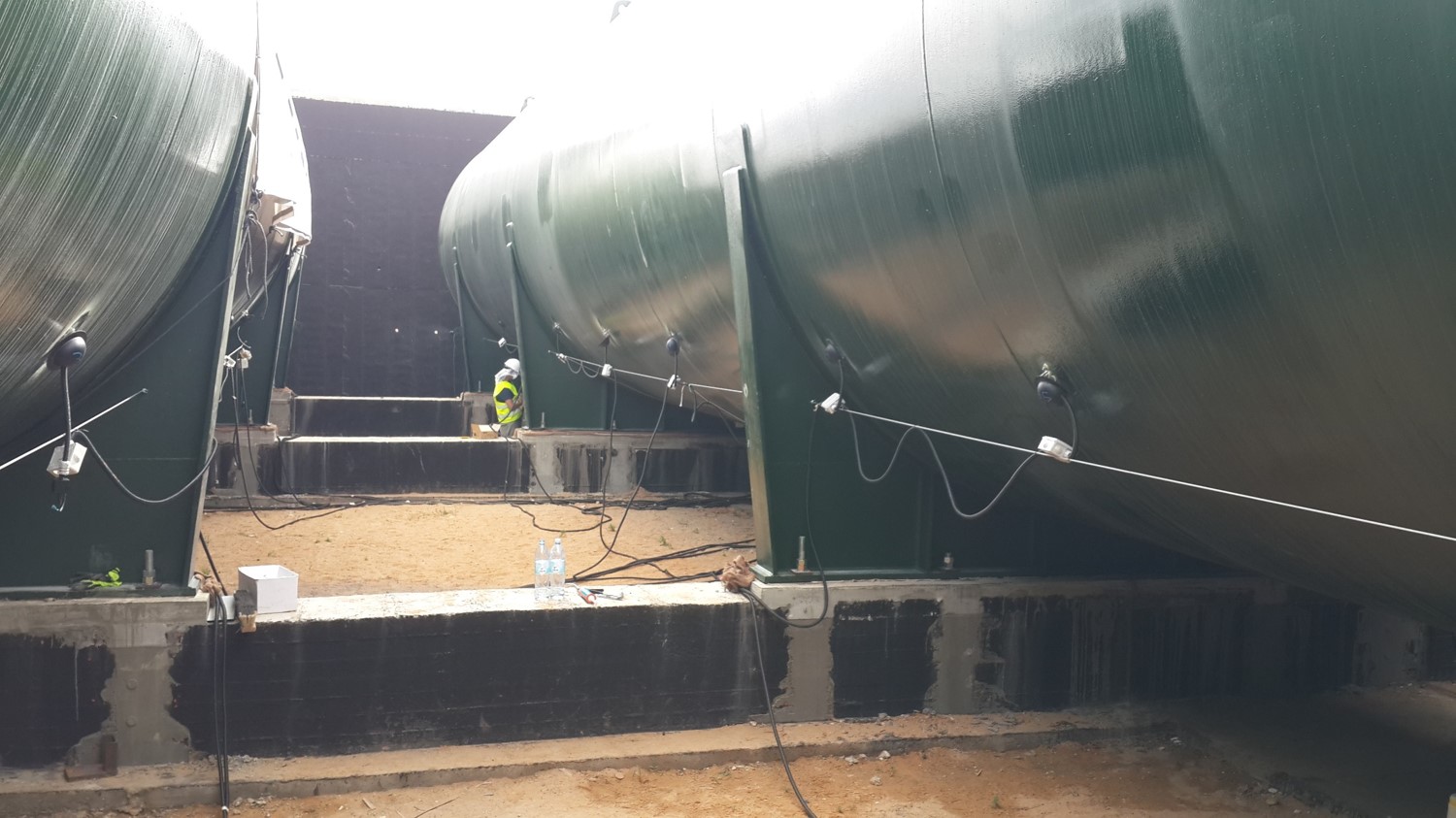Gas Piping and Pressure Vessels
Gas piping and pipelines are considered critical systems at elevated risk of catastrophic failure with casualties and high economic damage. Also, number of pipelines and their capacity constantly increasing which makes routine inspection of such pipelines for flaws and leaks extremely important.
AE Capabilities:
AE is used to inspect and monitor 100% of gas line length and:
- Detect flaws such as general electrochemical corrosion, pitting, cracks of different nature including stress corrosion cracking and others.
- Reliably detect and quantify gas leaks out of valves or connections.
- Monitor leaks through improperly closed valves.
AE vs. Others NDE Methods:
Overall inspection of gas pipelines by traditional methods such as different ultrasonic methods can be limited due to large number of welds to be examined, insulation, limited access in case of underground lines and other reasons. Even when a flaw is detected, traditional methods in many cases cannot distinguish developing or non-developing flaws or effectively monitor their propagation. All these limitations can be overcome with AE technology.
Gas Pressure Vessels and Storage Tanks
AE is used widely for inspection of pressure vessels and storage tanks of different types. The inspections performed according to ASTM, ASME and ISO codes. However, not every pressure vessel or storage tank can be inspected “by the book”. There are cases when a specially developed approach and solution are necessary for reliable diagnostics. Examples are ammonia and other vessels subjected to stress corrosion cracking.
AE System Installation and Inspection. AE vs. Others NDE Methods:
Ultrasonic, radiography, magnetic particles and other methods are used for evaluation of pressure vessels and storage tanks. However, these inspection normally do not cover 100% of structure, requires expensive shutdown of operation, cleaning, and scaffolding. All these are avoided using AE. System installation and inspection is performed during normal work of vessels, without scaffolding by climbers while entire vessel is simultaneously inspected and monitored. In case of insulated vessels small openings in insulation are made to mount AE sensors which later are re-insulated and sealed. Whenever significant indications revealed, other NDE methods can be applied to confirm AE findings. These capabilities of AE technology increase operational safety of vessels and significantly reduce inspection time and costs.
AE standard procedures:
AE examination of gas lines and pressure vessels comply with the following ASTM and ASME standards:
- ASME, Boiler and Pressure Vessel Code, Section V, Article 12: Acoustic Emission Examination of Metallic Vessels During Pressure Testing.
- ASTM E1139: Standard Practice for Continuous Monitoring of Acoustic Emission from Metal Pressure Boundaries.
- ASTM E1211: Standard Practice for Leak Detection and Location Using Surface-Mounted Acoustic Emission Sensors.
- ASME, Boiler and Pressure Vessel Code, Section V, Article 13: Continuous Acoustic Emission Monitoring.
- ASTM E569: Standard Practice for Acoustic Emission Monitoring of Structures during Controlled Stimulation.
